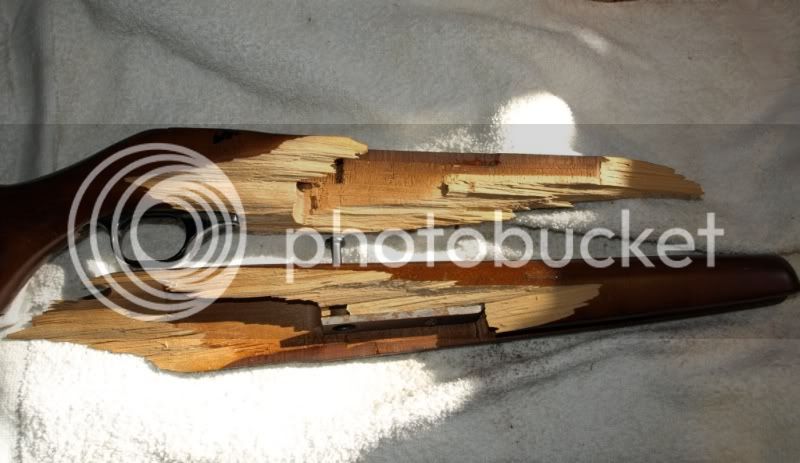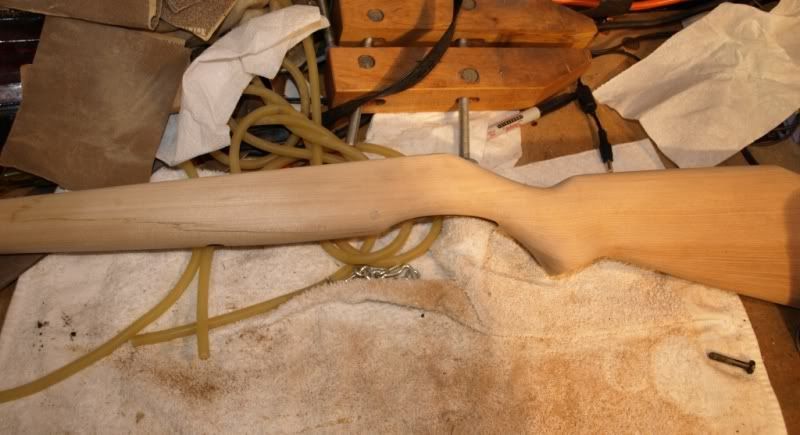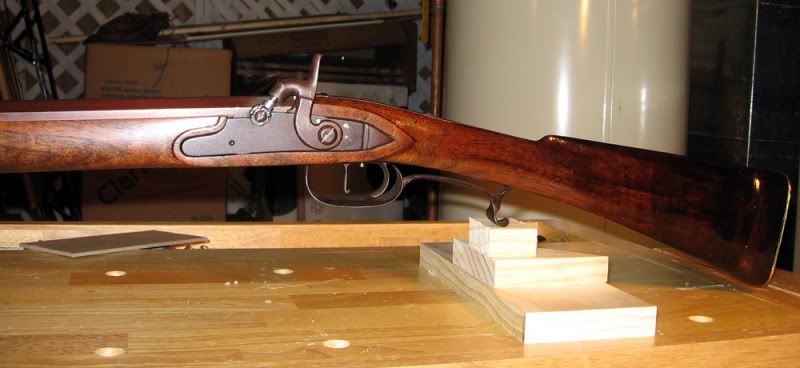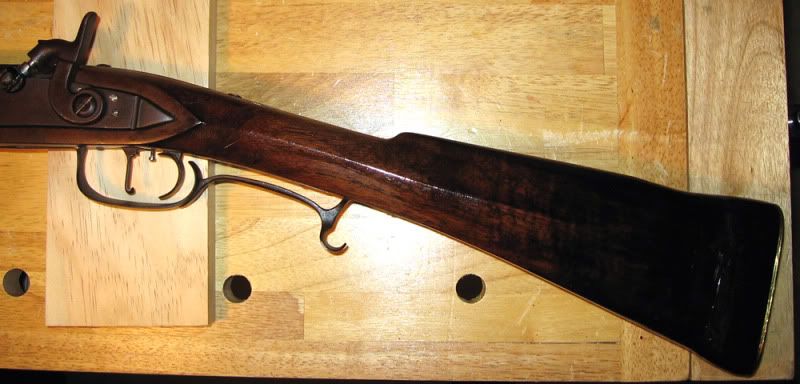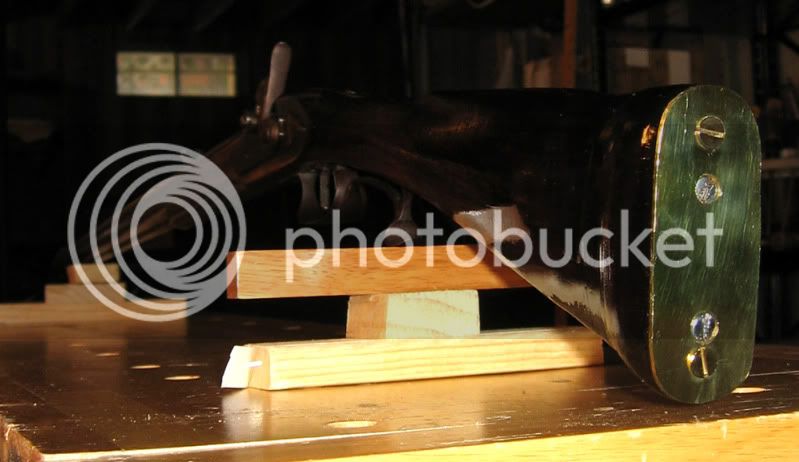A couple of years back I purchased an original Leman that was located halfway across the country, knowing it had some existing repairs to the wrist area. Unfortunately one of the repairs separated completely during shipping. I know some would say old rifles should be left in whatever condition they are found, however I had purchased this gun as a squirrel shooter and it is obvious this "ain't this stock's first rodeo" as there have been several obvious older repairs.
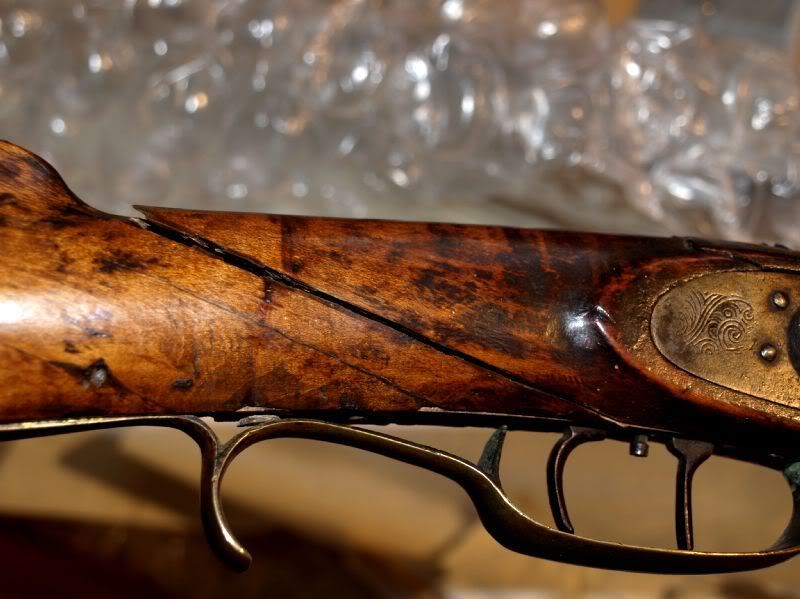
I tied it up with a leather thong and stored it away until I could effect a repair. In the meantime I researched repair methods. After removing the barrel, lock, trigger guard and trigger plate I ended up with this. Also The piece above the lockplate was barely held on by two brass pins:
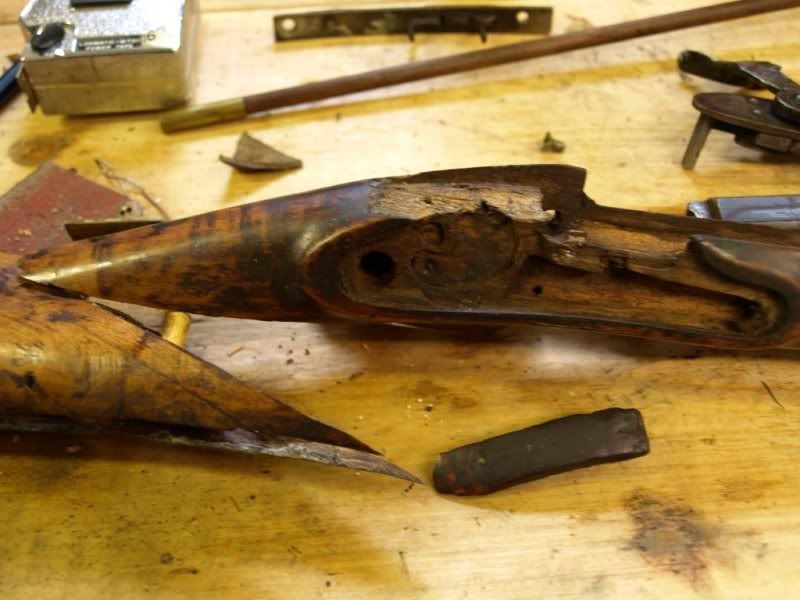
The rear screw on the trigger plate was snapped off and the tip of the screw was buried in the wood. I drilled around the screw with a small bit until I could get a hold of it with needle nose pliers, then drilled the area out for a plug.
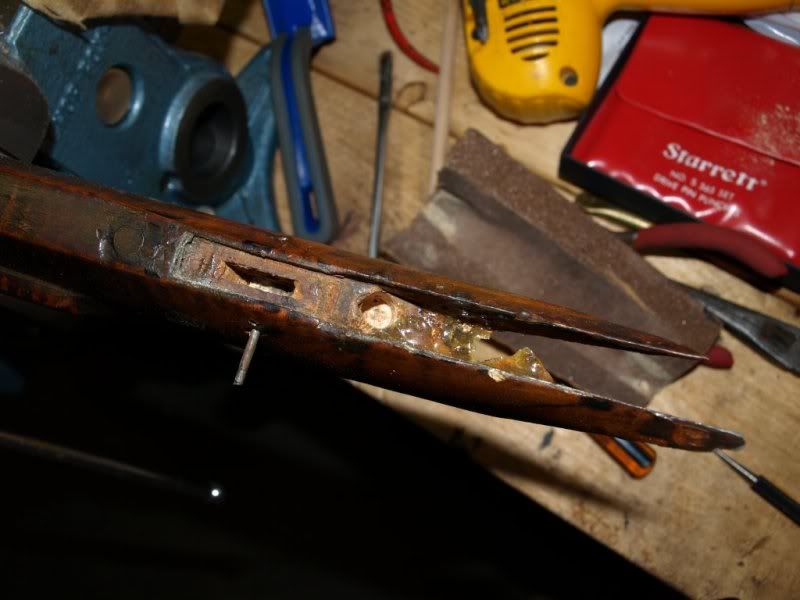
I sanded the plug until it was a tight press fit and glued with Titebond II. I then chiseled off the excess and stained the plug. I then checked the trigger assembly for fit.
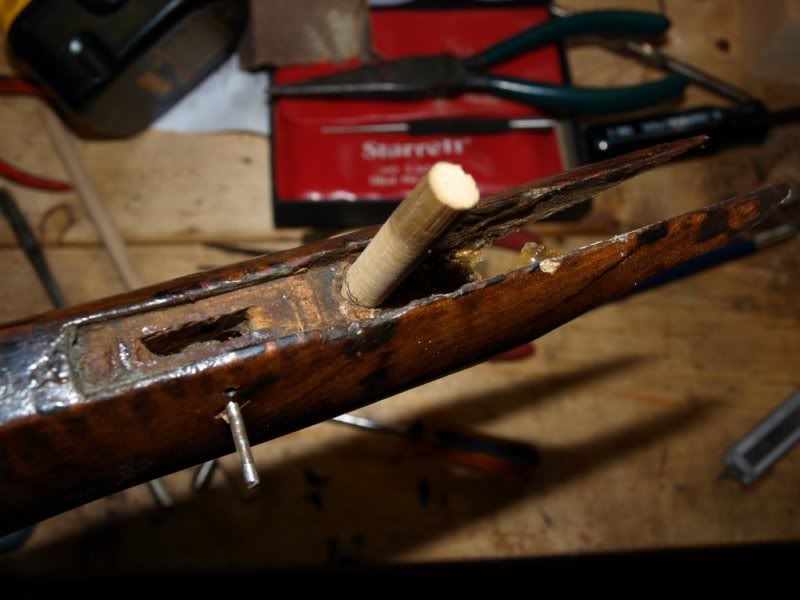
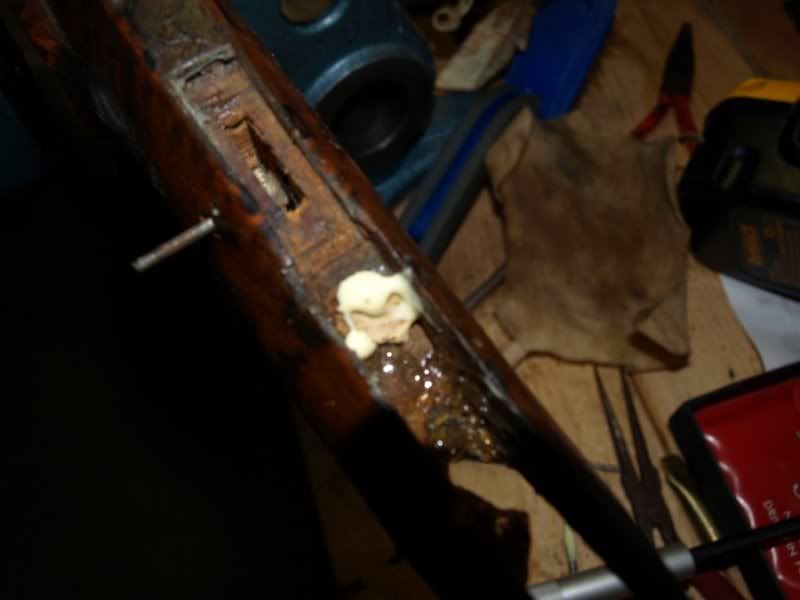
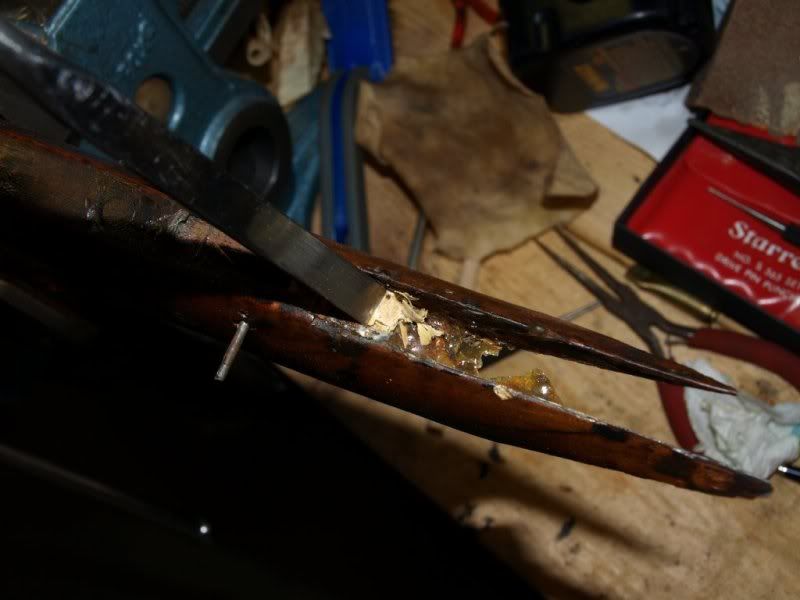
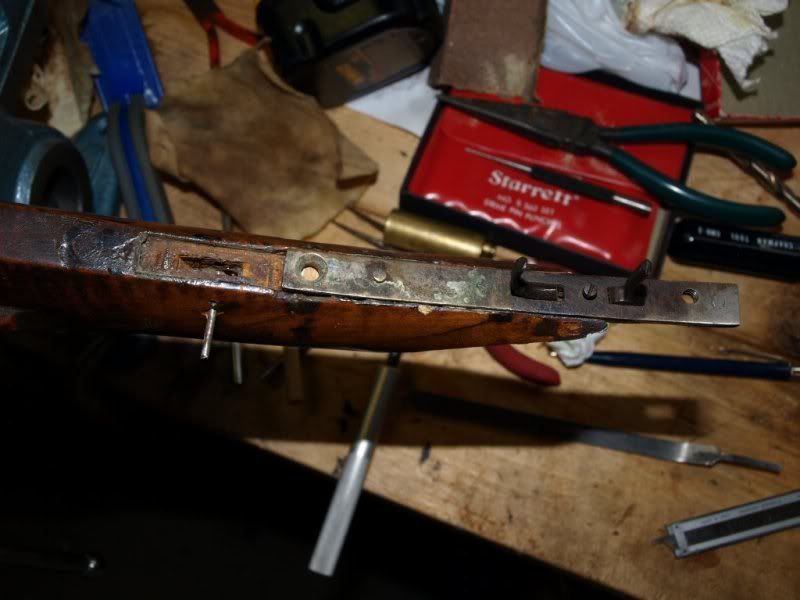
I cleaned the loose stuff off the cracked pieces of the stock and applied 2 coats of release agent liberally on the stock around the entire areas to be repaired, then set it aside to cure while mixing the acraglass components and one small drop of brown dye.
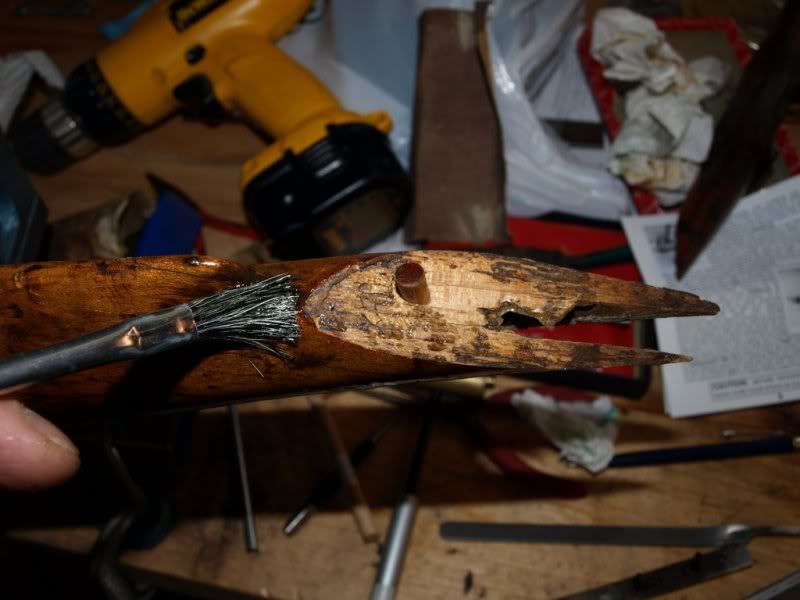
Next comes the acraglass, again applied liberally:
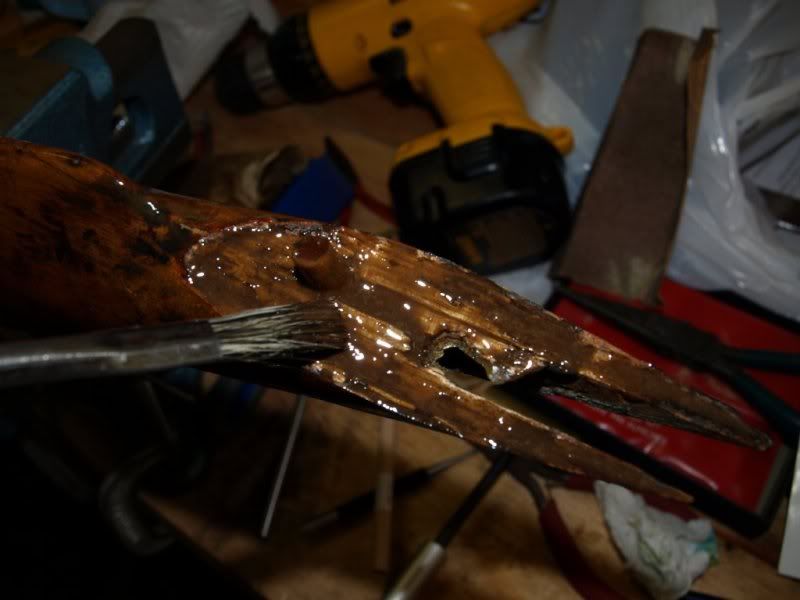
I then pressed the stock together (you can see the wood dowel still in place from the old repair.)
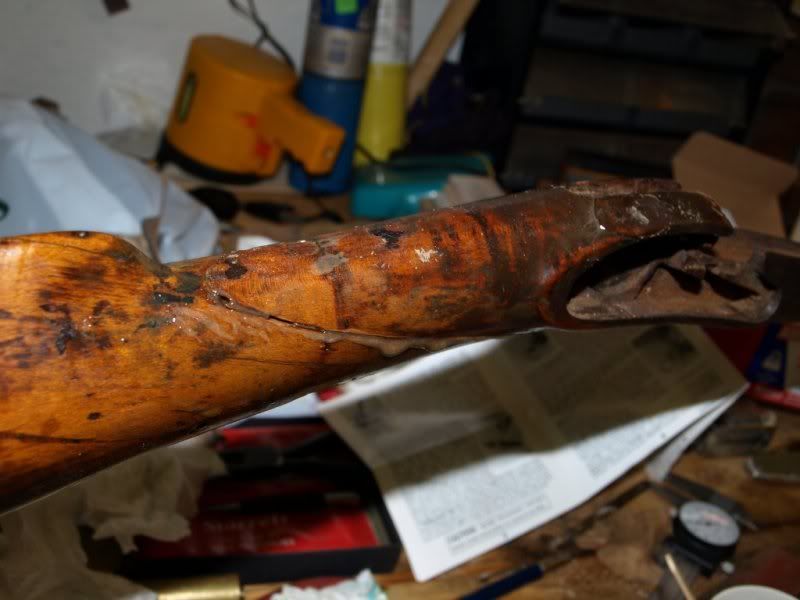
The three parts were then clamped with tightly wrapped surgical tubing.
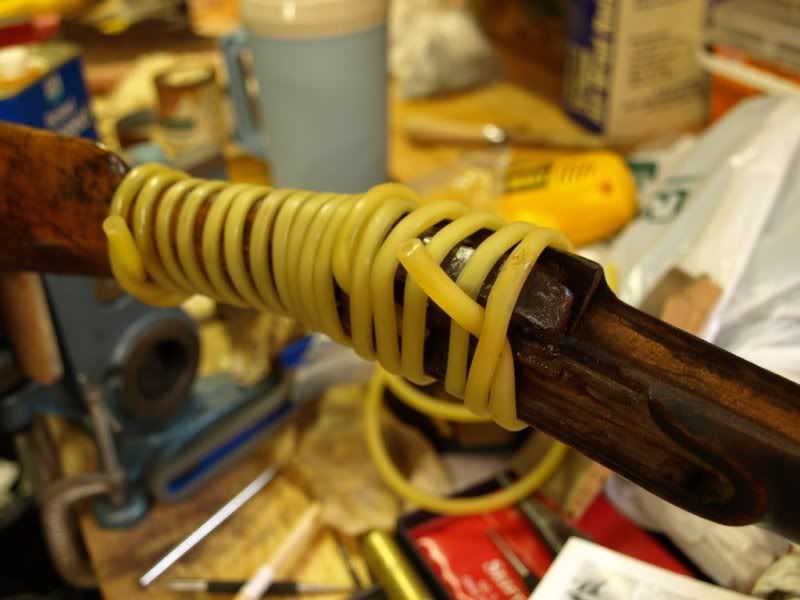
After 12 hours I removed the tubing.
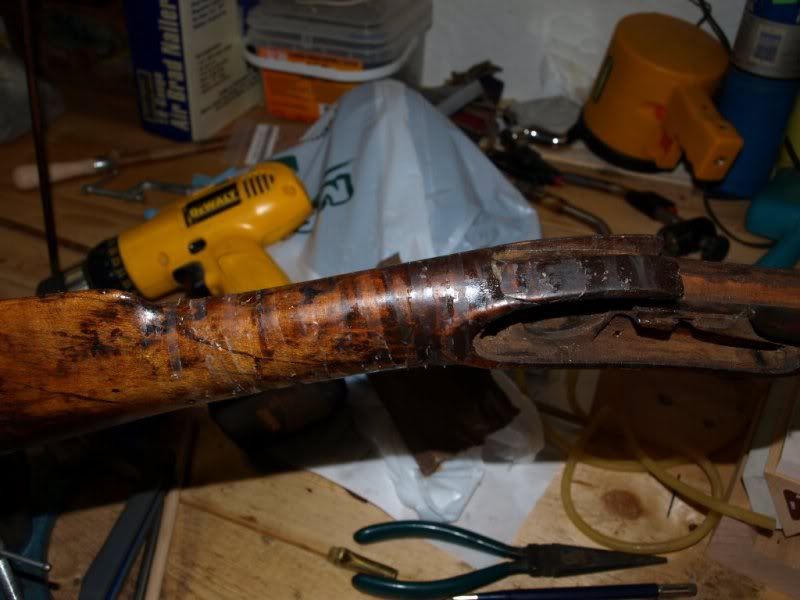
The excess acraglass was easily removed with a light touch using cabinet scrapers, my thumbnail and very fine steel wool. The remaining release agent was removed with a rag dampened with rubbing alcohol. You can see there was some wear around some of the edges of the old repairs.
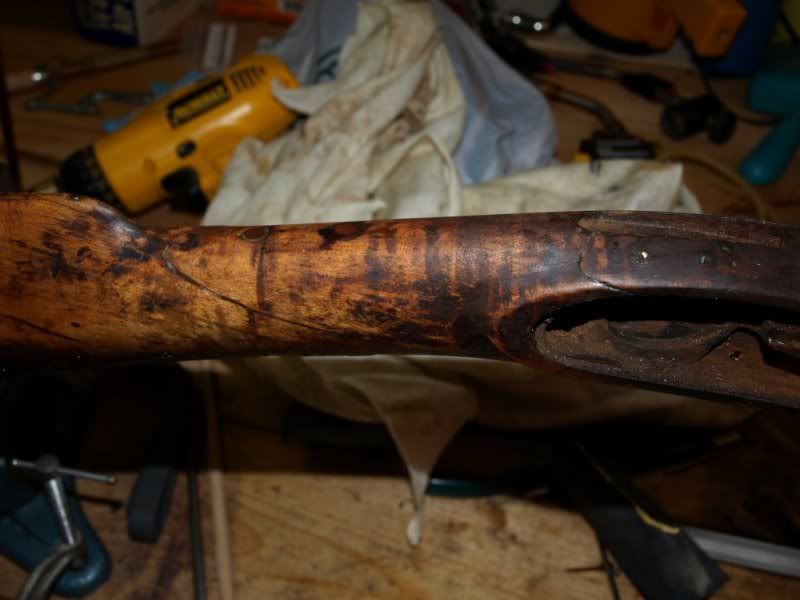
I rubbed the stock with a very light coat of boiled linseed oil, then rubbed a little beeswax into the extra triggerguard pinhole and the bad crack above the lock panel to smooth the transition a bit.
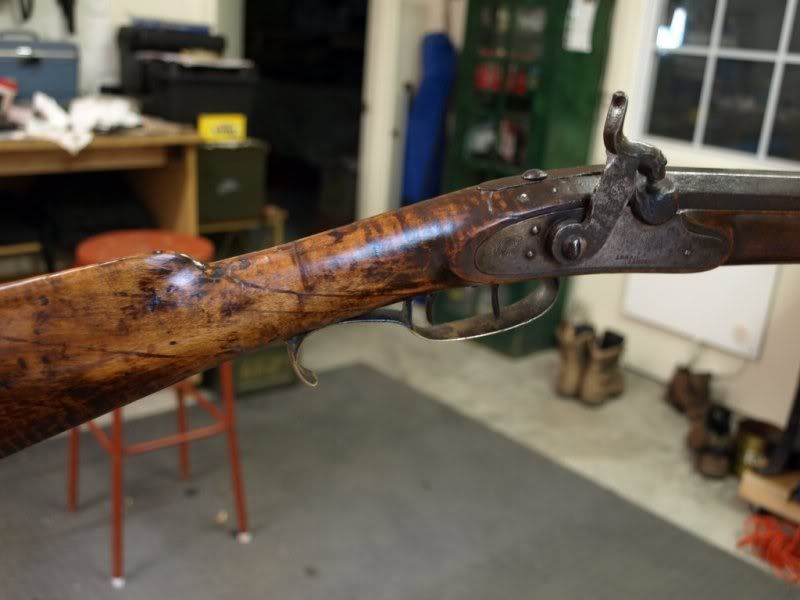
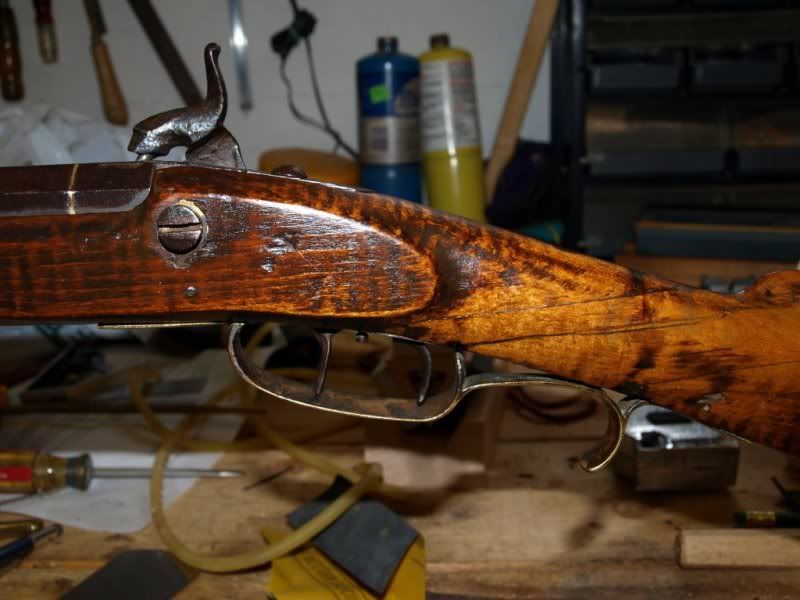
As a side note to the stock repair, while I had the rifle apart I was looking the barrel over closely and noticed a tiny golden gleam on the corner of one of the flats. I had noticed before that there had once been a gold band inlay on the barrel, but assumed it had flaked off years ago. I gently worked it with the folded edge of a piece of 500 grit wet/dry sandpaper and this is what I found under the brown grime. Bonus!

Thanks for looking.
Curtis

I tied it up with a leather thong and stored it away until I could effect a repair. In the meantime I researched repair methods. After removing the barrel, lock, trigger guard and trigger plate I ended up with this. Also The piece above the lockplate was barely held on by two brass pins:

The rear screw on the trigger plate was snapped off and the tip of the screw was buried in the wood. I drilled around the screw with a small bit until I could get a hold of it with needle nose pliers, then drilled the area out for a plug.

I sanded the plug until it was a tight press fit and glued with Titebond II. I then chiseled off the excess and stained the plug. I then checked the trigger assembly for fit.




I cleaned the loose stuff off the cracked pieces of the stock and applied 2 coats of release agent liberally on the stock around the entire areas to be repaired, then set it aside to cure while mixing the acraglass components and one small drop of brown dye.

Next comes the acraglass, again applied liberally:

I then pressed the stock together (you can see the wood dowel still in place from the old repair.)

The three parts were then clamped with tightly wrapped surgical tubing.

After 12 hours I removed the tubing.

The excess acraglass was easily removed with a light touch using cabinet scrapers, my thumbnail and very fine steel wool. The remaining release agent was removed with a rag dampened with rubbing alcohol. You can see there was some wear around some of the edges of the old repairs.

I rubbed the stock with a very light coat of boiled linseed oil, then rubbed a little beeswax into the extra triggerguard pinhole and the bad crack above the lock panel to smooth the transition a bit.


As a side note to the stock repair, while I had the rifle apart I was looking the barrel over closely and noticed a tiny golden gleam on the corner of one of the flats. I had noticed before that there had once been a gold band inlay on the barrel, but assumed it had flaked off years ago. I gently worked it with the folded edge of a piece of 500 grit wet/dry sandpaper and this is what I found under the brown grime. Bonus!

Thanks for looking.
Curtis




